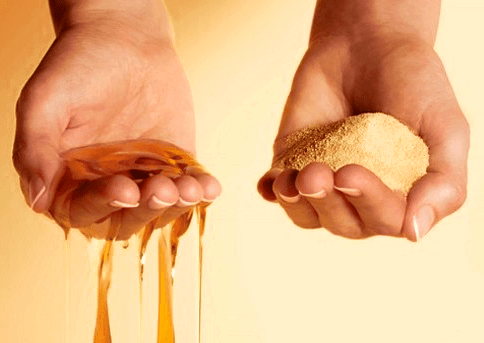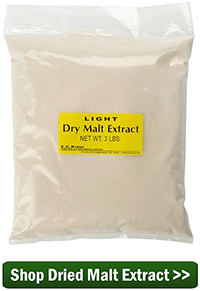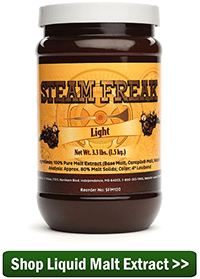 There are a number of “this vs. that” debates in homebrewing: dry vs. liquid yeast, single vs. two-stage fermentation, extract vs. all-grain brewing. On both sides of the argument you will hear supporters of their chosen method insist that theirs is better. But often times the answer depends on the brewer, their equipment, their skill level, their time availability, and a number of other factors. It all boils down to personal preference.
There are a number of “this vs. that” debates in homebrewing: dry vs. liquid yeast, single vs. two-stage fermentation, extract vs. all-grain brewing. On both sides of the argument you will hear supporters of their chosen method insist that theirs is better. But often times the answer depends on the brewer, their equipment, their skill level, their time availability, and a number of other factors. It all boils down to personal preference.
The same can be said for dried malt extract vs liquid malt extract. Neither is necessarily better than the other. Both forms of malt extract have their merit, and both have their drawbacks. Let’s break down the difference between both types of malts to determine when you might prefer dried malt extract or liquid syrup in your homebrew.
Dried Malt Extract (DME) – Pros
- Dried malt extract offers more fermentable extract by weight, meaning you need less of it to achieve a target gravity.
- DME tends to keep longer with fewer storage issues. It isn’t known for getting darker over time, as sometimes happens with liquid malt extract that has been stored for too long. This can be a big advantage when comparing dried malt vs liquid.
 As a powder, DME is much easier to measure into precise increments. With a digital scale you can measure it out in fractions of an ounce. This makes DME a great choice for priming, supplementing beer recipes, and for making gravity adjustments.
As a powder, DME is much easier to measure into precise increments. With a digital scale you can measure it out in fractions of an ounce. This makes DME a great choice for priming, supplementing beer recipes, and for making gravity adjustments.
Dried Malt Extract (DME) – Cons
- DME sometimes clumps together when pouring it into wort. If there’s any steam coming off your kettle, it may make the DME sticky while it’s still in the bag. Try turning off the heat when you add it to the kettle to reduce steam getting into the package.
Liquid Malt Extract (LME) – Pros
- Liquid malt extract has a convenience factor. It’s easy to store, transport, and package. For this reason, most extract homebrew recipe kits come with LME.
- Liquid malt extract offers a slightly wider range of flavors. For example, Munich malt extract only comes in liquid form. Additionally, some liquid malt extracts are hopped, so if you’re looking for a hopped malt, there’s no debate between dried malt extract vs liquid. You’ll need to get LME.
 Liquid Malt Extract (LME) – Cons
Liquid Malt Extract (LME) – Cons
- LME can be difficult to pour, since it tends to stick to the inside of the container. Soak the canister in hot water first to help it pour out more easily.
- It’s difficult to measure out smaller quantities, say 1 lb. of liquid malt extract. Most LME comes in 3 or 3.3 lb. cans.
- Many brewers report that LME makes darker beers. If brewing a light-colored extract ale or lager, consider using light DME.
Remember, whether you brew with dried malt extract vs liquid, you can always use both in a single recipe. They are that interchangeable. You will also notice that nothing was mentioned about the taste of either dried or liquid malt syrup. That’s because there is no discernible difference in taste.
So which do you prefer? Do you think one is better. Do you normally use dried malt extract or liquid malt extract? Or, does even matter to you?
—–
David Ackley is a beer writer, brewer, and self-described “craft beer crusader.” He holds a General Certificate in Brewing from the Institute of Brewing and Distilling and is founder and editor of the Local Beer Blog.

If you brew in an electric system like the Grainfather, adding LME can/will cause the heating element to overheat, tripping the element circuit breaker, Also, it tends to burn on the element cover. A work around I use after seeing this happen is I pre-mix the LME using hot water(`150/160 deg F) pumped from the unit into another pot to make a thin slurry, then slowly return it to the kettle so it can mix with the hot water and grain to mash. The mash times might be off due to preheating the LME, but, I didn’t notice any appreciable change in flavor or texture.